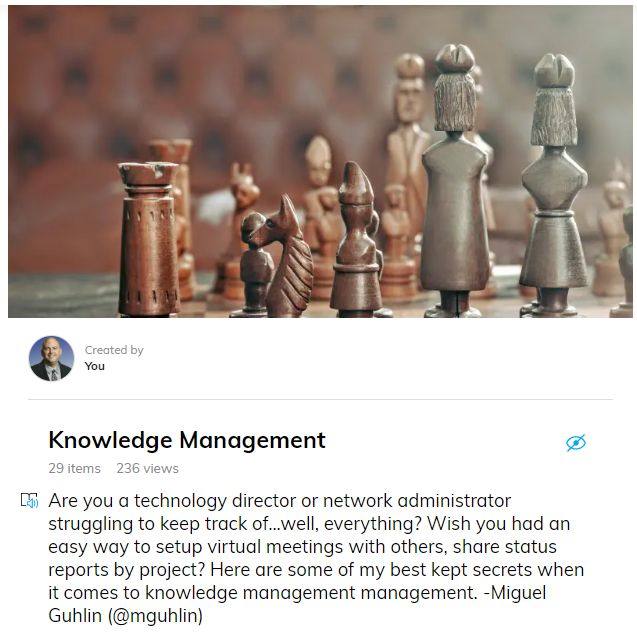Strategic technology planning can’t exist without in the trenches support. How do you prepare your technology department for this kind of work? In this blog entry, we’ll share tips for practical educational technology planning.
The Big Picture
When beginning the journey of technology planning, balance long-term and short-term goals. You want the quick win of increasing device accessibility, but you must avoid the loss stemming from inadequate bandwidth or wireless access points. You must therefore plan long-term to increase your bandwidth and wireless access across all buildings. The short-term win comes when everyone can connect to the WiFi.
When planning ahead, know you will need to address these important priorities:
- Long-term planning
- Identifying areas of need
- Obsolescence planning and equipment replacement
- Budget allocations and sources of funding such as bond, eRate, Technology Instructional Materials Allotmentm local, and grants
May I share some quick tips for practical technology planning to address these with you?
Tip #1: Create a Knowledge Management Site
“Did you think you could remember all the details for many projects in your head and a few post-its?” grumbled a large urban school district project manager. She had forgotten a few key details in the deployment of new switches. The main one that caused problems was the lack of an email announcing the schedule for this project. Deliveries of equipment had begun, but schools had no idea of incoming equipment.
Project management and knowledge management go hand in hand. Project management (see this Project Management Wakelet) is essential to every undertaking in a school district. Put technology to work to ease this for all involved, including those with technology projects.

A knowledge base, a.k.a. knowledge management, website could have facilitated this. Creating one is easy but maintaining it can be difficult. Technology directors must make a habit of logging all plan details. It’s also important for support staff to grow accustomed to the work.
Learn more about knowledge management. | KM Wakelet
Tip #2: Establish Benchmarks
Need to know what the big issues are in your district? A technology audit is one sure way to discover infrastructure issues. You can use the data to develop metrics and key performance indicators (KPIs).
Another way to find out what’s going on is to try the personal touch. Try two stars and a wish. What are TWO things technology is doing right? What is ONE thing you wish we could improve? Visit every campus and each department in the district and get their response. Rank the wishes and celebrate the stars. Get it done within your first three months on the job.
Here’s one story of how that works:
When I first started here, I scheduled individual conversations with every administrator. I met with technology and teaching staff. I had good conversations and took lots of notes. I asked each to identify “two stars and a wish.” The one thing was something that would impact their school.
I mentioned their “stars” when I spoke at school committee meetings. This allowed me to make sure they heard that I valued their existing successes. This was true even though they might be small, or things I didn’t think were stars. I managed to find something in them that I could praise. Then, I used the “wish” list so that during that first year I made headway (at least some progress) on every item.
This is part of my building relationships strategy. People want to know you care before they care about what you know. So working on their wishes showed I listened and made what they cared about a priority for me, which showed I cared.
How will you build relationships and show people you care? Establish benchmarks for each aspect of your work, then grow from there.
Tip #3: Inventory Job Duties
Ask the technology team, “What is the actual work that you do that takes up your time?” Get them to write it down. This data can assist you in seeing who does what and who says they do more than they do. You will also be able to plan ahead for growth in resources and staff.
For example, one district I worked for did not know how much time they spent on account management. Every staff member took calls about resetting staff passwords. This took a bite out of everyone’s time and delayed many projects. While the technology team had a suspicion they were spending a lot of time on this, no one had put two and two together. When we replaced that time and effort with a single sign-on system, we recovered the time. The data collected also facilitated reorganization and reclassification of jobs and people got pay raises.
Ask the questions to streamline your technology department. This will yield benefits. Your technology plan will reflect increased efficiency and effectiveness.
Tip #4: Make a Top Ten List
It’s easy to get lost in the weeds. Take your assessment data and come up with a Top Ten list of priorities. Use this at every opportunity. Do your stakeholders understand what the district’s needs are?
Here’s one example. How could you create a top ten list that gives voice to organizational needs?
Tip #5: Keep Up to Date with State and National Legislation
Keep up to date with state and national legislative priorities. You can use them to shape the focus of your ed tech planning, as well as build a sense of urgency. You can use legislative priorities to send a message. One message? Technology makes a difference. For example, in 2019, blended learning grants were set up for districts to take advantage of.
The state dedicated two million dollars to professional development. Could your district piggyback a new instructional initiative on a micro-credentialing program? You wouldn’t know that if you didn’t follow TCEA advocacy efforts.
These five tips for practical e dtech planning make preparing for the future easier. With these tips, you can lay the foundation for solid technology progress.

